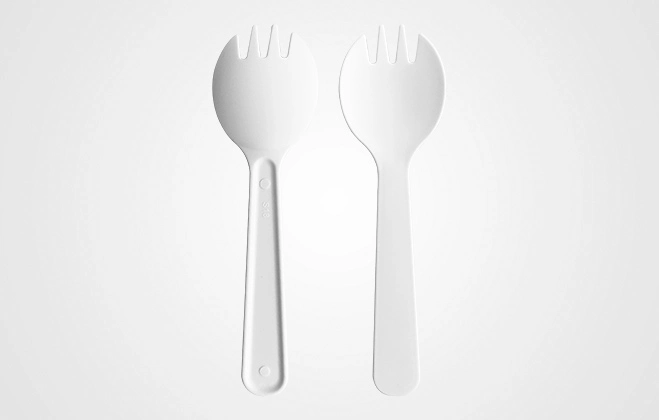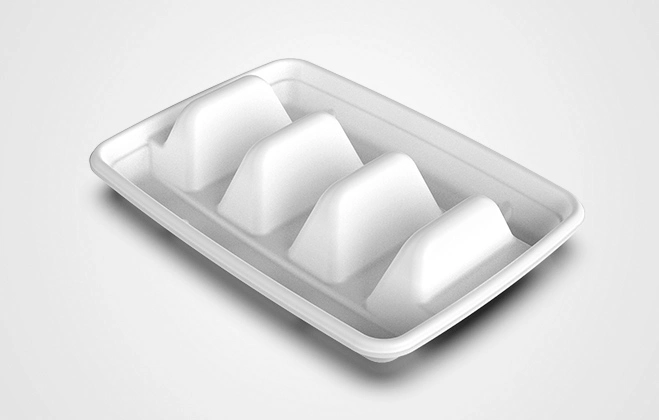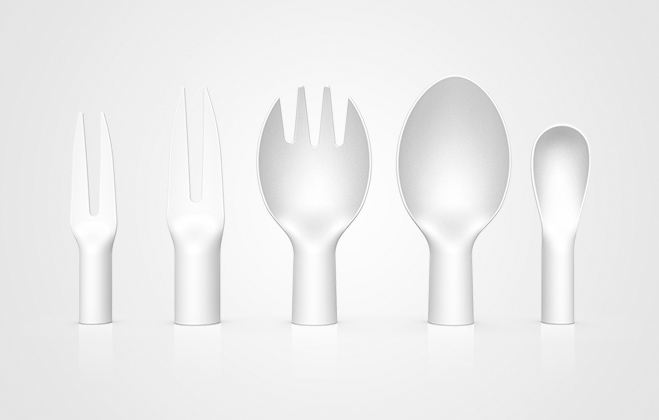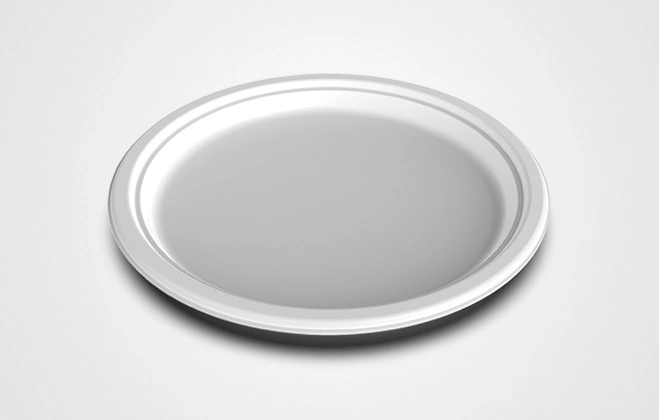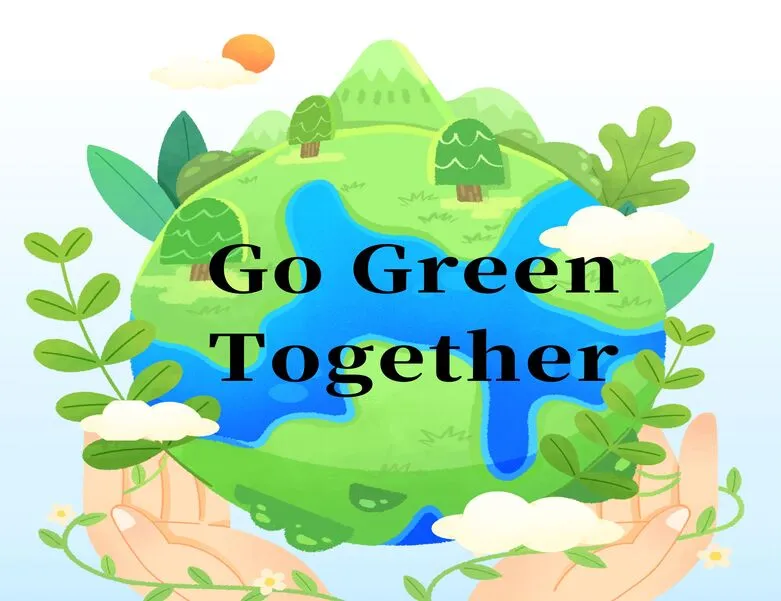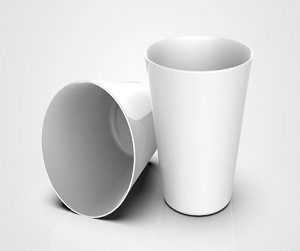Plastics have been the first step to reach the sea that humans cannot reach, and their next stop maybe your dining table.
Author | Zhu Yehua
Search for the keywords plastic straws and sea turtles on the video website, and you will see a video of scientists helping sea turtles: a plastic straw is inserted into the turtle's nostrils. The turtle looks a little difficult to breathe. After pulling out the long straw, the turtle screamed with blood flowing.
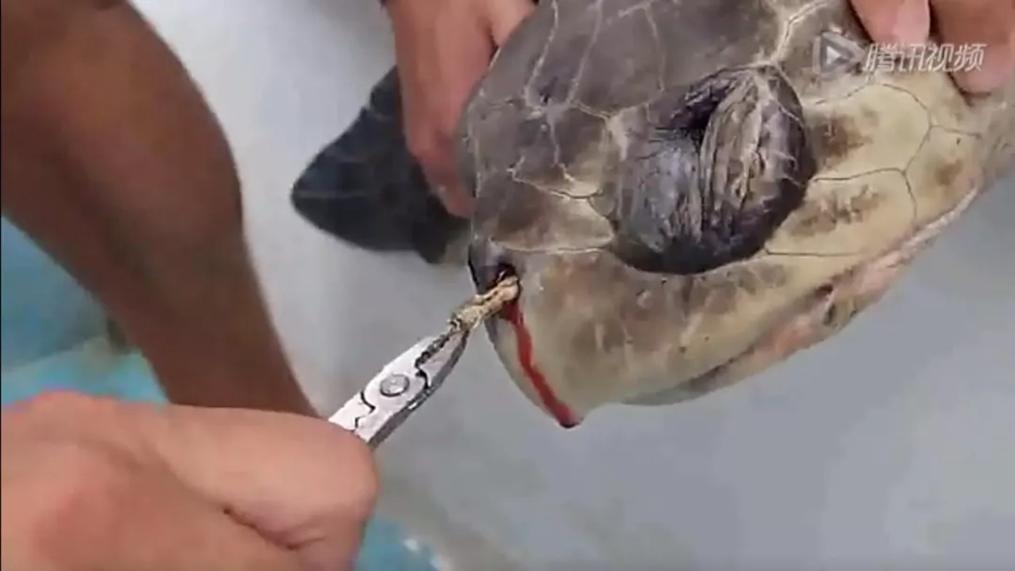
Scientists are helping sea turtles remove plastic straws | Tencent video
There are many videos and pictures similar to this kind of plastic persecuting marine life. Plastic is turning the ocean into a minefield. Plastic garbage, known as the "ghost killer" of marine life, has shown its painful killer side in reports in recent years.
"Plastic soup" that is getting thick
The ocean is like a huge soup pot, and humans are constantly adding plastic "condiments" to it, and more specifically and huge numbers are constantly being thrown out.
In the five years from 2007 to 2013, researchers from the Five Circulation Institute in the United States used trawl nets to carry out 24 salvage of plastic debris from five subtropical "circulations", the coast of Australia, the Bay of Bengal, and the Mediterranean. After screening and analysis one by one, the scientists made a list of plastic pollution in these seas,
including buoys, fishing lines, fishing nets, buckets, bottles, and bags.
After counting these plastic fragments, it was found that large plastics accounted for only 7% of the total. Many plastic products will decompose under the impact of sunlight and ocean waves and finally, decompose into a size that can only be seen under a microscope.
Researchers used computer simulations to analyze these findings and came up with amazing numbers: There are at least 5.25 trillion plastic fragments in the global ocean (from tiny particles with a diameter of less than 1nm to large fragments with a diameter of more than 20cm), ocean plastic pollution The total weight is about 269,000 tons. The researchers then used these data to modify a marine plastic distribution model.
Land dumping is the main source of plastic waste in the ocean. Jenna Jambeck of the University of Georgia and colleagues conducted a global assessment of plastic waste discharged into the ocean in 2010. They selected 192 coastal countries and regions as the research targets and took residents within 50km from the coastline as the research objects. They collected statistics on the quality of waste generated per person per year in these areas, the proportion of plastic waste, and the proportion of improperly handled plastic waste. , Using the model to estimate that in 2010, 192 coastal countries and regions produced a total of 275 million tons of plastic waste. Among them, 4.8 million to 12.7 million tons entered the ocean. If you take the median, that would be 8 million tons of plastic waste, which is roughly equivalent to 500 billion plastic beverage bottles. If they are put together, more than 4 Beijing’s The area of the urban area is submerged in ankle-deep plastic
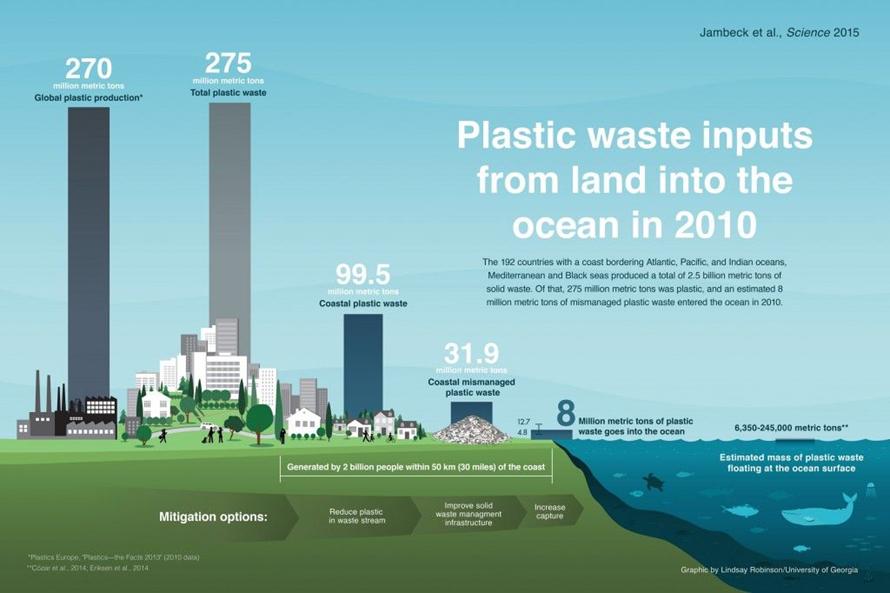
Illustration of plastic waste entering the ocean from land in 2010 | Lindsay Robinson/University of Georgia
In order to catch the smaller-sized plastics in the ocean as much as possible, oceanographer Erik van Sebille of Imperial College London and his colleagues use fine nets to "fish." They comprehensively analyzed the information of 11,854 trawlers and came up with a "global list" of small plastic debris floating on or near the sea. These trawlers come from all seas except the Arctic. They estimated that in 2014, there were 15 trillion to 51 trillion pieces of plastic particles floating in the ocean, with a total weight of 93,000 to 236,000 tons.
In 2016, the new estimation results pushed the amount of marine debris to a new level: There are currently more than 150 million tons of plastic in the ocean, and the number is still increasing. As you read this article, every minute About 9 million tons of plastic (equivalent to 1.4 million 500mL plastic bottles) enter the ocean. Unless the world adopts strict measures to further recycle, by 2050, the amount of plastic waste in the ocean will exceed that of fish and become the “population” of the ocean. "The most households.
The harm of plastic pollution to marine ecosystems has attracted more and more attention. They pose a great threat to foraging marine animals, including many birds, turtles, fish, marine mammals, and invertebrates. In 2017, Gesamp, a joint expert group in marine environmental protection science, published its latest report on evaluating global microplastics. The results confirmed that tens of thousands of organisms and more than 100 species have been contaminated by plastics.
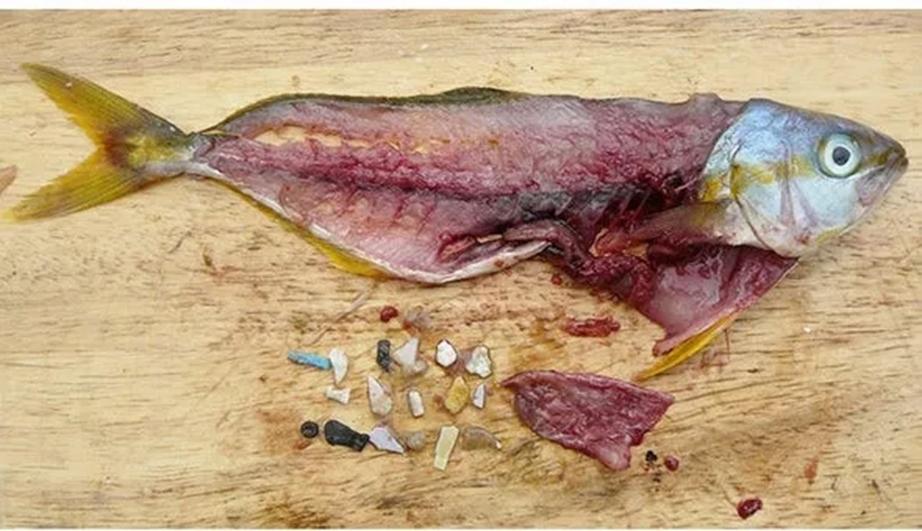
 English
English 日本語
日本語 한국어
한국어 français
français Deutsch
Deutsch Español
Español русский
русский português
português العربية
العربية ไทย
ไทย Malay
Malay
















